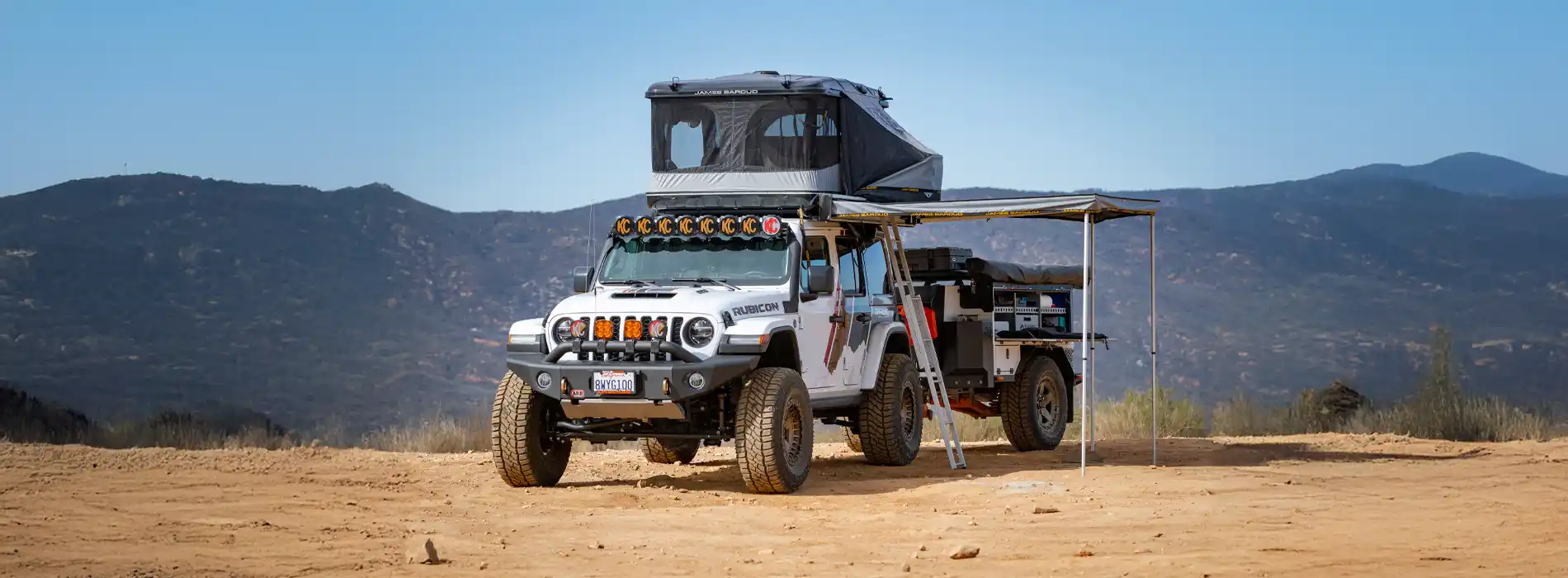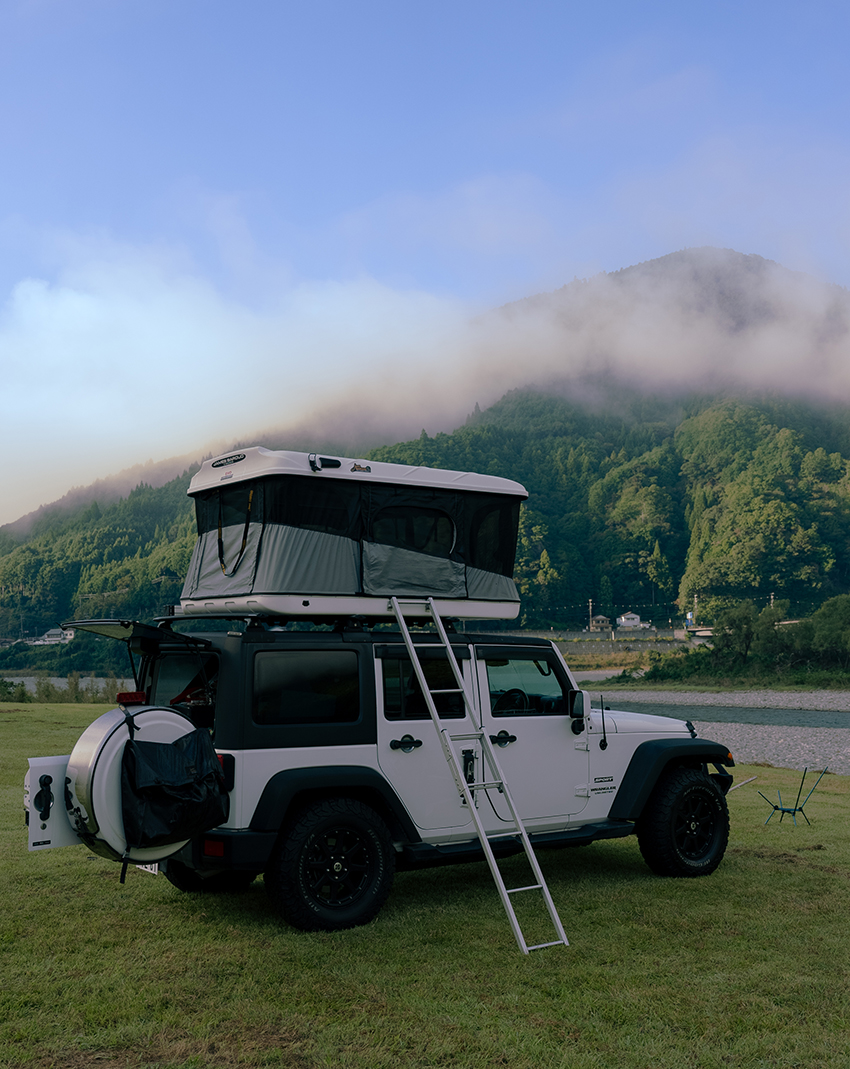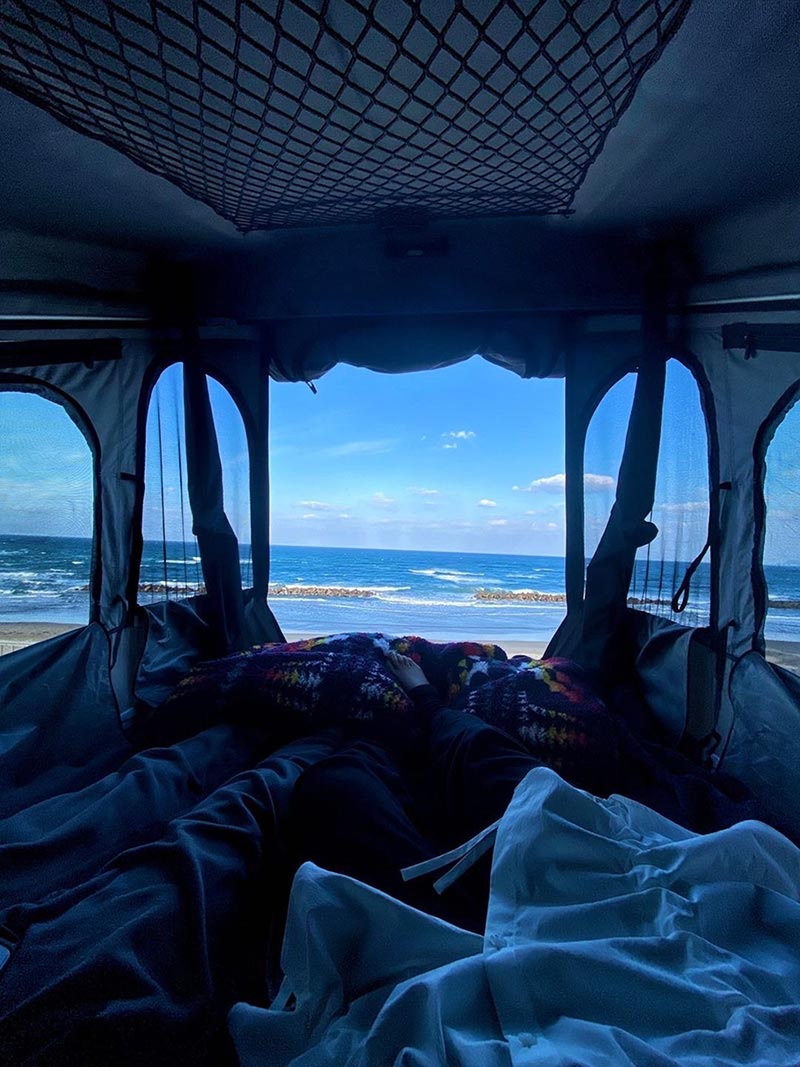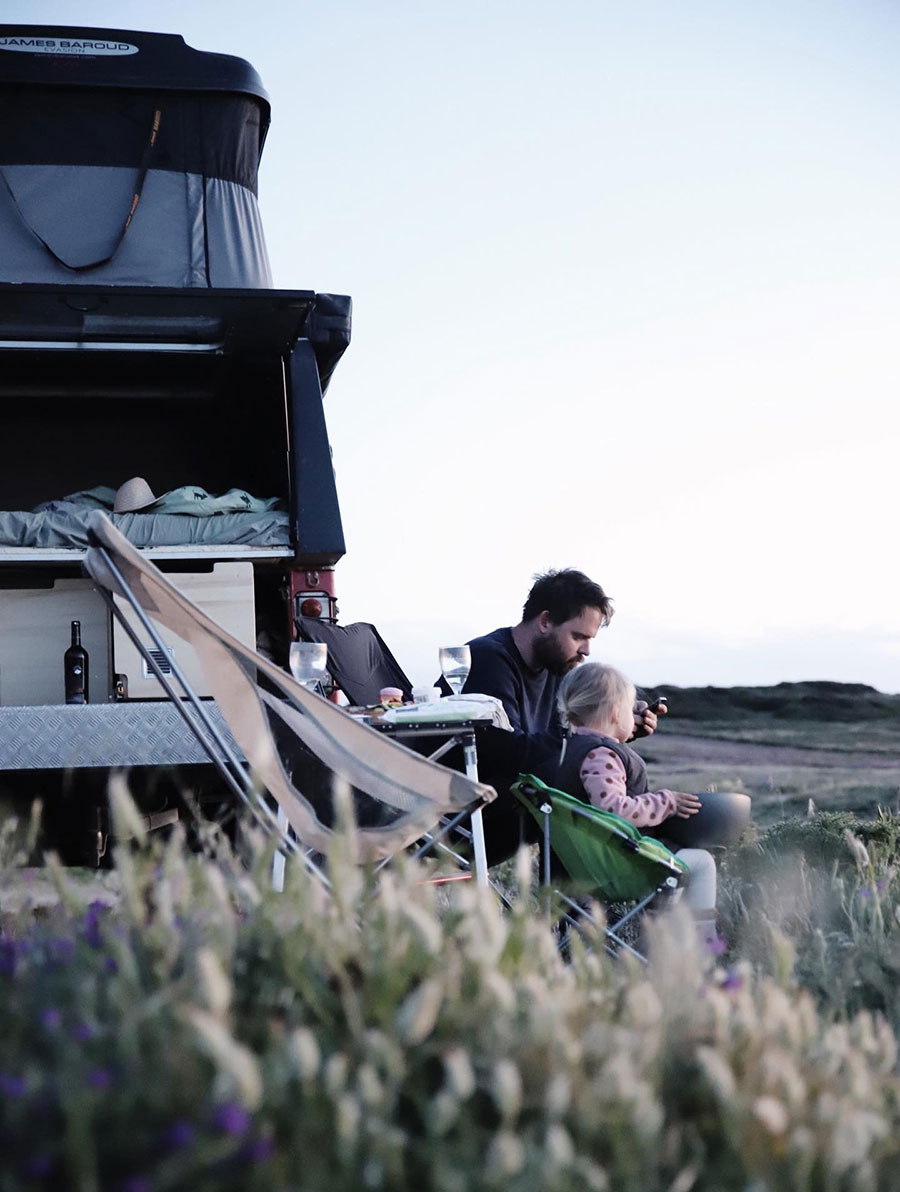
Understanding Overlanding: The Ultimate Guide for Adventure Enthusiasts
24 Sep, 2024
Overlanding is a form of self-reliant adventure travel that combines the thrill of off-road driving with the essence of camping, exploration, and discovery. It involves traveling to remote and rugged destinations, often over long distances, with a focus on the journey rather than just the destination. Overlanders typically travel in off-road capable vehicles, fully equipped for prolonged stays in the wilderness, allowing them to explore uncharted territories and experience the beauty of nature up close.
Unlike typical road trips, overlanding is about venturing into the unknown, embracing self-sufficiency, and enjoying the journey as much as the places you visit. The experience often includes traversing challenging terrains, such as forests, deserts, mountains, and even crossing rivers, all while relying on your own skills, knowledge, and equipment.
What is the difference between off-roading and overlanding?

While overlanding and off-roading might seem similar at first glance, they are distinct activities with different objectives.
Off-Roading refers to driving on unpaved surfaces, such as trails, dirt roads, or rocky terrains, typically for short, adrenaline-filled adventures. The focus of off-roading is primarily on the driving experience itself—navigating challenging obstacles like steep inclines, deep mud, or large boulders. Off-roaders often return to a base camp or their homes at the end of the day.
Overlanding, on the other hand, incorporates off-roading as part of a much broader adventure. The primary focus of overlanding is not just the drive but the journey as a whole. It’s about reaching remote destinations, exploring new cultures, and embracing the wilderness. Overlanding trips often last several days, weeks, or even months, requiring a higher level of self-reliance, as you must carry all necessary supplies and equipment with you.
In essence, off-roading is a component of overlanding, but overlanding is a much more comprehensive, immersive experience that combines travel, exploration, and self-sufficiency.
What is overlanding vs. camping?
Camping and overlanding share similarities, as both involve spending time in the great outdoors, often away from civilization. However, the two activities differ in terms of scope, objectives, and logistics.
Camping typically involves traveling to a designated campsite, setting up a tent or parking an RV, and enjoying nature in a relatively fixed location. Campers often stay at established campgrounds with amenities such as restrooms, picnic tables, and fire pits. The focus is usually on relaxation, outdoor activities like hiking or fishing, and spending quality time with family and friends.

Overlanding, by contrast, is about continuous travel and exploration. Overlanders rarely stay in one place for long; instead, they journey through diverse landscapes, often setting up camp in remote, undeveloped areas. Unlike traditional camping, where comfort and convenience are often prioritized, overlanding requires more self-sufficiency, as you must carry all your food, water, fuel, and gear for extended periods. The experience is more about discovery and the challenge of surviving and thriving in the wilderness.
While camping can be part of an overlanding trip, overlanding is more complex and demanding, requiring careful planning, robust equipment, and a spirit of adventure.
What is an overlanding vehicle?
An overlanding vehicle is a critical component of any overlanding adventure. These vehicles are specifically equipped to handle the rigors of off-road travel and long-term self-sufficiency. Here’s what typically defines an overlanding vehicle:
The role of rooftop tents
One of the most significant innovations that have enhanced the overlanding experience is the rooftop tent. Companies like James Baroud have revolutionized this aspect of overlanding by offering high-quality rooftop tents that combine durability, comfort, and ease of use—essential qualities for any overlander.
Advantages of rooftop tents for overlanding:
Quick setup
Rooftop tents are engineered for convenience, and one of their standout features is the ability to be set up in a matter of minutes. Unlike traditional ground tents that often involve multiple steps—such as laying out the tent, assembling poles, and staking it into the ground—rooftop tents are designed with simplicity in mind. With most models, including those from James Baroud, deployment is as easy as unstrapping the cover and allowing the gas strut-assisted mechanism to lift the tent into place. This rapid setup means you can arrive at your destination, deploy your tent, and be ready to relax or explore within moments. This efficiency is especially valuable for overlanders who are on the move and need to set up camp quickly as daylight fades or when unexpected weather rolls in. The ease of setup also minimizes fatigue after a long day of driving or adventuring, allowing you to maximize your enjoyment of the journey.

Safety and comfort
One of the primary advantages of rooftop tents is the elevation they provide, offering a significant safety benefit by keeping you off the ground. This elevation protects you from ground-dwelling wildlife such as insects, snakes, or other animals that might wander through your campsite at night. Additionally, being off the ground means you’re less affected by wet or uneven terrain, which can be a common issue with ground tents.
James Baroud’s rooftop tents take safety and comfort to the next level by incorporating high-density foam mattresses into their designs. These mattresses ensure a good night’s sleep, which is crucial for recovering from the physical demands of overlanding. Unlike thin sleeping pads that are often used in ground tents, these mattresses provide superior support, helping to alleviate pressure points and ensuring you wake up refreshed and ready for the next day’s adventure. The combination of elevation and a quality sleeping surface means you can rest easy, knowing you’re safe, comfortable, and ready to face whatever the next day brings.
All-Weather protection
Rooftop tents are built to endure the harshest weather conditions, ensuring that you stay dry and protected no matter where your adventure takes you. James Baroud’s tents, for example, are constructed from UV-resistant, waterproof materials that not only keep the rain out but also protect against prolonged sun exposure, which can degrade materials over time. The tents are also designed to withstand strong winds and snow, making them suitable for use in a wide range of climates—from the searing heat of the desert to the freezing cold of alpine environments.
The construction materials used in these tents are both durable and lightweight, providing an ideal balance for overlanders who need equipment that can perform in all conditions without adding excessive weight to their vehicle. The waterproofing ensures that even during heavy downpours, you remain dry inside, with no risk of leaks. Furthermore, the tents are engineered to prevent condensation buildup, which is a common issue in traditional tents, thanks to their advanced ventilation systems. This attention to all-weather protection means you can embark on your overlanding adventures with confidence, knowing that your rooftop tent will keep you sheltered from the elements.
Versatility
Rooftop tents offer incredible versatility, making them a popular choice for overlanders who need adaptable solutions. These tents can be mounted on a variety of vehicles, from SUVs and trucks to vans, making them accessible to a wide range of adventurers. The versatility of rooftop tents allows overlanders to customize their camping setup based on the specific requirements of their vehicle and the nature of their trip.
James Baroud’s rooftop tents are designed with universal mounting systems that make installation straightforward, regardless of your vehicle type. This flexibility means that whether you’re driving a compact SUV or a large off-road truck, you can equip your vehicle with a high-quality rooftop tent that suits your needs. Additionally, these tents can be paired with other overlanding gear, such as awnings, storage solutions, and solar panels, allowing you to create a fully integrated and personalized camping setup. This versatility is a key advantage for overlanders who need their equipment to be adaptable to different environments and trip lengths.
Built-in ventilation and solar features
Advanced rooftop tents come equipped with features that enhance comfort and functionality, making them more than just a place to sleep. One of the standout features of James Baroud’s tents is their built-in ventilation systems, which are designed to maintain a comfortable interior climate regardless of the outside conditions. These systems include air circulation technology that prevents condensation—a common problem in enclosed spaces. Proper ventilation not only keeps the tent’s interior dry and free from mold but also ensures a comfortable temperature, even in warm climates.
In addition to ventilation, some James Baroud models integrate solar panels, providing a sustainable power source for extended trips. These solar panels can power lights, charge devices, and run small appliances, reducing the need to rely on your vehicle’s battery or external power sources. This self-sufficiency is particularly valuable for overlanders who travel to remote areas where access to electricity is limited. The integration of solar technology into rooftop tents represents a significant advancement in overlanding gear, allowing travelers to enjoy modern conveniences while remaining off the grid.
Compact and efficient design
Rooftop tents are designed to be both compact and efficient, addressing the needs of overlanders who require gear that doesn’t compromise vehicle performance. When folded, these tents have a low profile and aerodynamic shape, which minimizes drag and reduces the impact on your vehicle’s fuel efficiency. This is particularly important for long-distance overlanding trips, where every bit of fuel economy counts.
The compact design of rooftop tents also means they take up less space on your vehicle, leaving room for additional gear such as roof racks, storage boxes, or bikes. Despite their compact form when closed, these tents unfold into spacious, comfortable sleeping quarters, offering the best of both worlds. James Baroud’s tents, for instance, are engineered to be durable yet lightweight, using advanced materials that don’t add unnecessary weight to your vehicle. This efficient design makes rooftop tents an ideal choice for overlanders who need to maximize both space and performance without sacrificing comfort or functionality.
Finding the right rooftop tent to fit your overlanding adventures
When it comes to overlanding, the right rooftop tent can significantly enhance your experience, offering comfort, safety, and convenience in even the most remote locations. James Baroud, offers several models designed to adjust to different needs and preferences.
We’ll compare four popular James Baroud rooftop tents—Evasion, Space, Grand Raid, and Discovery—to help you make an informed decision based on your overlanding requirements. Related to this topic we also advice you to read our article on How to choose your perfect rooftop tent.
The Evasion rooftop tent is a popular choice among overlanders due to its balanced blend of comfort, durability, and versatility. It’s designed for easy setup and can be deployed in less than a minute, making it ideal for those who value convenience during their travels.
Key Features
The Evasion is perfect for overlanders who prioritize ease of setup and appreciate the panoramic views. It’s ideal for those who plan to explore diverse environments, from mountains to deserts, and need reliable protection from the elements.
The Space rooftop tent is designed for those who require extra room and comfort on their overlanding adventures. It offers a slightly larger interior compared to other models, making it suitable for families or overlanders who prefer a more spacious sleeping area.
Key Features
The Space rooftop tent is ideal for overlanders who need more interior space, whether due to family travel or a preference for extra room to move around. It’s a great choice for those who plan longer trips where comfort is paramount.
The Grand Raid is James Baroud’s top-of-the-line model, designed for serious overlanders who demand the highest level of performance and durability. This tent is built to withstand the most extreme environments, from arctic conditions to scorching deserts.
Key Features
The Grand Raid is the ultimate choice for hardcore overlanders who tackle the most challenging environments. It’s perfect for expeditions in extreme weather conditions and for those who need a tent that offers the highest level of protection and durability.
The Discovery rooftop tent is designed for overlanders who want a lightweight, compact, and versatile option that doesn’t compromise on quality or comfort. It’s one of the more streamlined models, making it easier to install and transport.
Key features
The Discovery rooftop tent is perfect for overlanders who prefer a minimalist, lightweight setup without sacrificing comfort or durability. It’s an excellent choice for solo travelers or couples who prioritize efficiency and ease of use.
Overlanding is more than just a way to travel—it’s a lifestyle choice for those who seek adventure, self-reliance, and a deep connection with the natural world. Whether you’re drawn to the idea of exploring uncharted wilderness, the challenge of self-sufficiency, or the thrill of off-road driving, overlanding offers a unique and rewarding way to experience the world.
The right vehicle, proper preparation, and the inclusion of key equipment like a high-quality rooftop tent are essential for a successful overlanding journey.
As you embark on your overlanding adventure, remember that the road less traveled awaits you—ready to offer experiences and memories that will last a lifetime.
